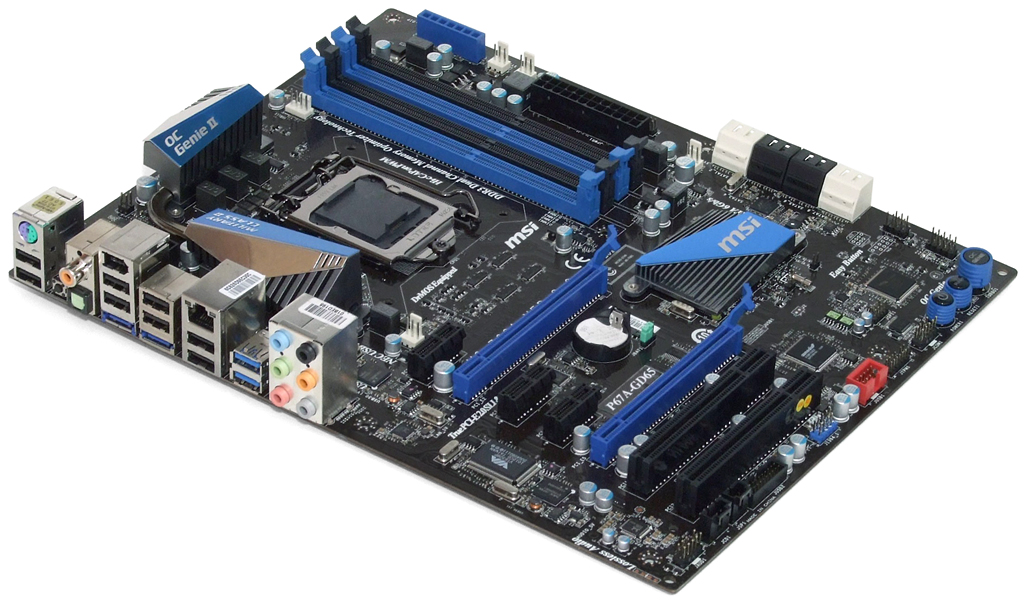P67 Motherboard Roundup: Nine $150-200 Boards
Improved per-clock performance and higher achievable frequencies are sure to put Intel’s latest K-Series CPUs on top of many builders’ whish lists, but they’ll still need a new socket to put it in. We test nine enthusiast-oriented LGA-1155 motherboards.
MSI P67A-GD65
MSI packs its P67A-GD65 with two added SATA and two USB 3.0 controllers to take second place in the scramble for best feature set, focusing the rest of its efforts on overclocking and firmware enhancements.
Those added drive controllers support two internal SATA 6Gb/s drives with RAID 0 or 1, plus two eSATA 3Gb/s drives. A single gigabit Ethernet controller handles networking needs, though the firm does retain the FireWire ports missing from its best-featured rival.
Rather than pack its processor interface area with an excessive number of CPU voltage controller phases, MSI adds heavy-duty parts to its eight-phase design. MSI makes some fairly bold statements about these parts, but the proof of the VRM is in the overclocking. We’ll put this one through the same test as all of its competitors.
A row of voltage detection pins lines the top of the front edge, surrounded by brackets that hold a voltmeter’s probes in place. The P67A-GD65’s installation kit also includes extension leads for use with that connector.
Three spaces separate the P67A-GD65’s two graphics card slots, allowing a little more airflow to the top card in SLI or CrossFire configurations. As with other motherboards in this roundup, the second slot takes half the lanes from the first whenever a card is installed there, changing the slot configuration from x16/x0 to x8/x8.
With only a single USB 2.0 header, the P67A-GD65 supports the fewest USB 2.0 front-panel ports of any motherboard we’ve seen in a few years, though the pathways for two more ports are shared with its USB 3.0 breakout connector.
While the overall design of MSI’s P67A-GD65 fits most of our needs, we see a potential problem with the two connectors located in the bottom-rear corner. The front-panel audio header is furthest from its intended jacks, and we’ve even seen a few cases with cables that were too short to reach its extreme location. The front-panel USB 3.0 header slightly forward of the bottom-rear-corner could pose similar cable reach issues, but only after cases are released that can connect to it.
Get Tom's Hardware's best news and in-depth reviews, straight to your inbox.
One of the ways MSI avoids any issue of USB 3.0 front-panel cables that won’t reach is by not including a front-panel bay adapter. A slot plate is still included to connect these ports, along with an SLI bridge and four internal SATA cables.



